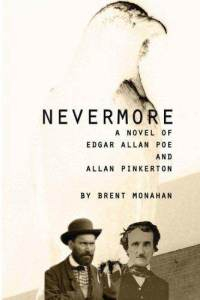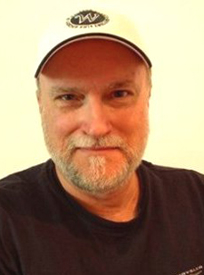Brent Monahan’s Faustian thrillers explore bargains people make with their souls

Brent Monahan’s mom had her son pegged early on. While an undergrad in the early ’70s, Monahan came home one weekend to find his mother had slapped one of her trademark snarky signs on his bedroom door. This one read: Renaissance man.
It’s an apt description for Monahan, who started his college career majoring in German, ended up with degrees in music and has worked – usually simultaneously - as a classical singer, actor, vocal coach, published mystery novelist, soap opera writer and distance-learning specialist for Rutgers.
“I’m getting as many lives as I can in one,” said Monahan, who earned his bachelor’s degree and master’s in musicology from Rutgers in 1971 and 1974 respectively.
“You only go around once.” But of all his crafts, the one Monahan’s been honing longest is writing.
It began as a hobby, with short stories in high school and a science fiction novel he wrote at Rutgers, and blossomed into a successful career.
His most recent work, Nevermore, is a whodunit about the death of Edgar Allan Poe – a subject still shrouded in mystery. Like all of Monahan’s novels, Nevermore is based on kernels of truth woven into a tapestry of plausible and historically accurate “what ifs?”
Monahan found it bizarre that Poe, a man who fancied fine clothing, turned up incoherent on a bench, dressed in rags ,after he’d gone missing for three days in Baltimore. And then just before he died, Poe mumbled the name Reynolds several times.
Theories abound about his demise – rabies, swelling of the brain, delirium, poisoning – but no autopsy was performed.
“They put him in the ground around Halloween,” Monahan said. “It was 1849, the early days of the Pinkerton Detective Agency. So [in the book] I have Allan Pinkerton investigate and uncover the secrets of Poe’s life – and death.”
Of Monahan’s 16 novels, a dozen, including Nevermore, have been published. In 2005, The Bell Witch: An American Haunting was turned into the movie An American Haunting, starring Sissy Spacek, Donald Sutherland and Rachel Hurd-Wood.
The 1997 novel, like all of Monahan’s, is based on documented events, this time involving a poltergeist, pubescent girl and the death of the father of a 19th-century Tennessee farm family. After poring through hundreds of books on the subject, he spun his work around a possible cause for the haunting – incest – an incident he suspected while reading between the lines during his research.
“I don’t write horror. I write supernatural thrillers because horror to me are things that can’t happen: vampires, werewolves and mummies,” he said. “My stuff is almost always Faustian – doing deals with the devil. Because we all make choices on how we behave, and what we’re willing to do to get ahead, and what price we must pay to our souls. That’s what fascinates me.”
Monahan is every bit as passionate about his work at Rutgers, where he develops courses for the university’s Center for Online and Hybrid Learning and coaches faculty on the art of instructing effectively online.

Monahan’s broad background – from his time on the infrastructure side as a consultant for eCollege to his experience teaching online, hybrid and face-to-face screenwriting and fiction workshops for the School of Arts and Sciences’ writing extension program – resonates with the faculty he assists, said Richard Novak, associate vice president for Continuing Studies and Distance Learning.
“He knows what it is to teach and grade a class, set up assignments and deal with student issues,” Novak said. Novak credits Monahan’s easy going personality, patience and understanding of faculty temperament for his success in winning over faculty who may be wary of teaching methods that deviate from face-to-face instruction.
“He breaks it down so it is not scary. He uses imagery and metaphors to get the points across,” Novak said. “All that makes it a much less threatening experience for faculty who are new to this.”
Working with small groups of faculty and in one-on-one settings, Monahan suggests ideas for making the most effective use for distance learning technology. He describes it as helping faculty evolve from the “sage on the stage” model of teaching.
“That’s the old way. Monahan said of the front-to-back delivery style of learning. “Now we add to it the possibility of the ‘guide at the side.’ The students can be talking back and forth with each other and the teacher can guide the conversation. That’s what real life is like, collaborating and participating, not just (learning) like sponges.”
Distance learning has evolved from an email correspondence course into a multi-faceted platform – using audio, images and text - that when blended with on-campus participation enhances education, he said.
“There’s a richness that comes out of this beyond just the ease of ‘I don’t want to go (to campus) to turn my paper in.’ These tools can actually coax people into learning better.”